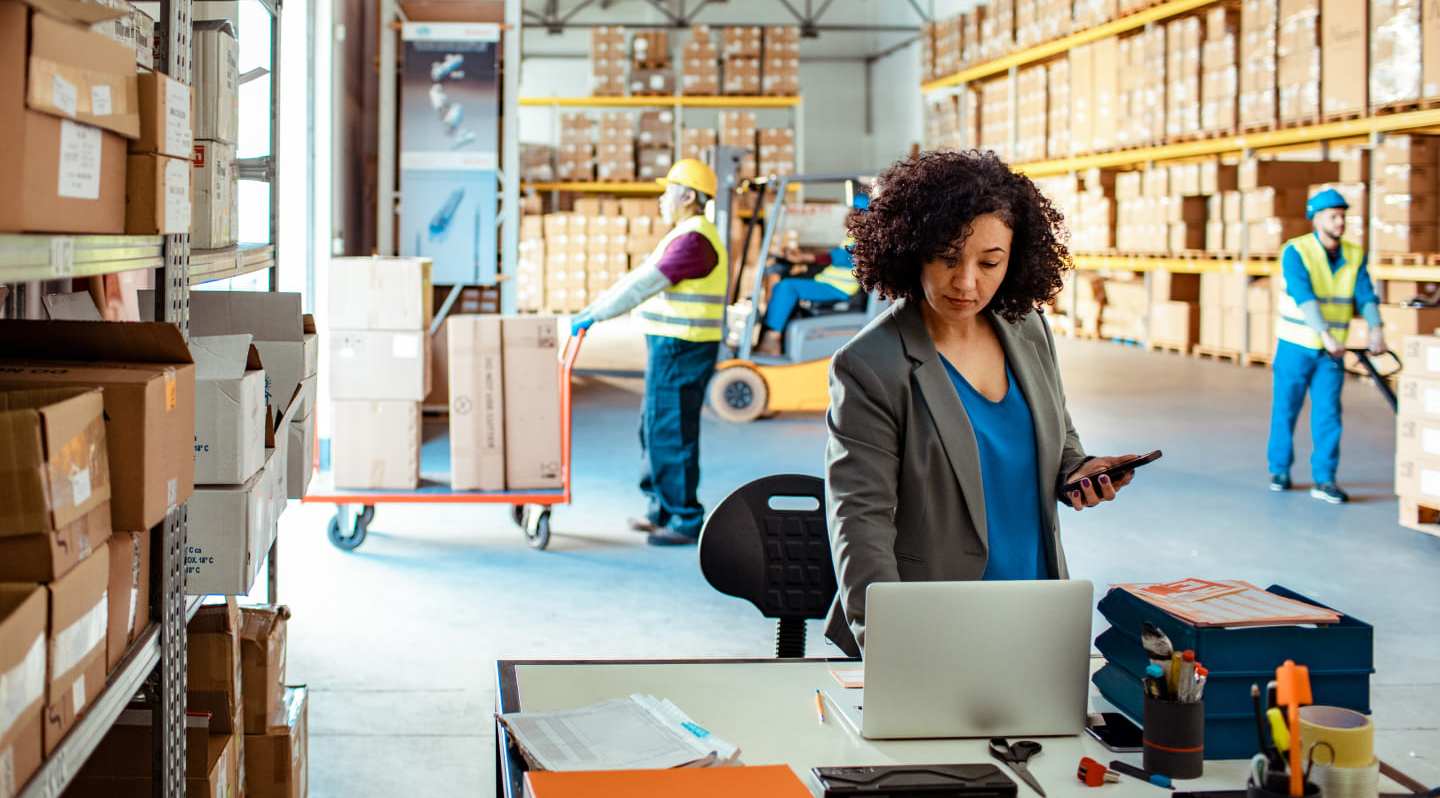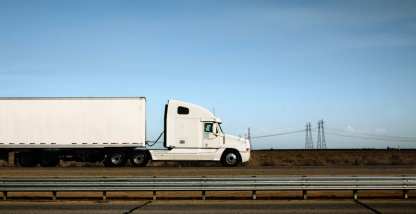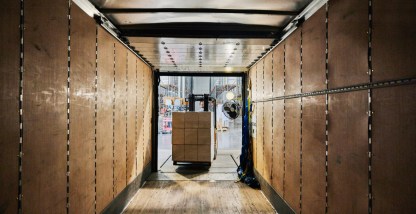In the e-commerce age, the customer is king. Modern customers expect their purchases to arrive quickly and affordably. The number of consumers expecting same-day delivery jumped in 2021 as shopping decisions were driven by speed, convenience, and price. Micro-fulfillment centers are one of the top ways for retailers to adapt to meet customer expectations. This article explores the trend.
What is micro fulfillment?
Micro fulfillment is a supply chain solution developed to help retailers meet customer demands and provide more efficient and cost-effective, last-mile delivery.
After a customer places an order from a retailer, there are many steps along the way before that customer receives their goods. Once the order is processed, the product needs to be retrieved from the retailer’s inventory and prepared for delivery. In the case of a national or global retailer, that inventory may need to be shipped to the local delivery area of that customer’s business or home. From there, it’s time for last-mile delivery.
Micro-fulfillment centers make it easier for retailers to get the product out to the customer because they hold inventory locally to meet demand. This enables delivery times in hours or even minutes, rather than days. Think of prepared food subscription boxes — customers in New York City don’t want their meat and produce on the back of a truck for days. They want the food to be fresh and local.
But food and beverage retailers aren’t the only companies using micro fulfillment. For example, a company may manufacture dog beds in Bend, Oregon, but the brand has a national presence thanks to its website and the convenience of online shopping. That means customers in Miami expect their orders to arrive the next day. So, this company’s logistics team might open a local micro-fulfillment center near Miami to process and deliver those orders efficiently. Otherwise, a customer that doesn’t want to wait days for the product to arrive from Oregon might go to the competition.
How does a micro-fulfillment center work?
Micro-fulfillment centers have come about in response to the e-commerce industry. At the same time, these centers could not have functioned as effectively and cost-efficiently without the advent of technology to track supply chain logistics, support online processing, and help automate picking and packing.
A micro-fulfillment center can be located in an existing store or warehouse or can be a dedicated small distribution/warehouse space, usually 10,000 square feet or less. These centers typically have a software solution to support order processing. They can also have robots that collect inventory from storage aisles and carry them to packing employees.
These centers are localized. Taking advantage of data insights, the retailer works to identify what type of inventory is in demand in a given area so that they can stock it in that area’s micro-fulfillment center. For instance, a center in Minnesota in January is unlikely to see a lot of need for sunscreen. Yet, that product might be in higher demand in sunny Southern California.
The micro-fulfillment center doesn’t hold all of a retailer’s inventory. Instead, they typically have only one or two’s day worth of inventory and are restocked regularly from larger warehouses.
Pros and cons of using micro-fulfillment centers
Micro-fulfillment centers accelerate delivery thanks to localized data and inventory. Automation for picking and packing in these centers also speeds up the process. The smaller size of the center can also improve accuracy and quality control.
With the nearby location shortening the distance traveled, there can also be environmental benefits as products travel less distance in vehicles with lower carbon footprint.
The ease of expansion is another advantage of micro-fulfillment centers. These smaller facilities are simpler and less expensive to build out in new locations as operations grow. According to Jungleworks, it’s estimated “MFCs can be built for a few million dollars and can be operational in a matter of months.”
Yet, micro-fulfillment centers aren’t for every retailer. The store category, product mix, and population and customer density need to result in high order frequency and demand for rapid delivery.
How to start a micro-fulfillment center
As customer demand to shorten delivery times continues to escalate, micro-fulfillment strategies have grown in popularity. Retailers, both large and small, are embracing this approach as a way to generate more revenue and help lower supply chain costs.
The National Retail Federation in June 2022 even hosted a webinar with Accenture and Attabotics representatives discussing how to implement micro-fulfillment to meet consumer expectations. Some of the key takeaways include:
- Conducting market research to decide where to place micro-fulfillment centers.
- Opening facilities within 20 miles of high-density cities.
- Making centers multi-tenant to share infrastructure with other retailers for cost efficiency.
- Using a van delivery model to process larger shipments of orders within a shorter time frame.
- Combining macro- and micro-fulfillment for greater efficiency (the macro center handles single pallets and replenishes the micro center, which processes multi-SKUs and prepares direct-to-consumer orders).
Challenges facing micro-fulfillment startups
Micro-fulfillment offers many benefits in the retail environment. Yet, there are still challenges when starting up one of these centers.
For one, successful micro fulfillment requires anticipating consumer demand and predicting what stock will need replenishing where and when. There is a lot more data available today to analyze and make decisions, but it is not an exact science. Consumers, after all, are unpredictable humans (no matter what the algorithms tell us).
Retailers also want to offer a variety of SKUs, but that proliferation of items in inventory can be more challenging to make profitable. Stocking and tracking all that inventory, and filling all of those orders is demanding work (at both the macro and micro level).
Determining where to locate your micro-fulfillment center can also be daunting. You need to find affordable real estate while keeping delivery timing and the availability of reliable carriers in mind—plus labor availability and costs. You’ll need to train human employees to interact with the technology and ensure that employees involved in picking, packing, and delivery are safe too.
Finding the right technology to support the micro-fulfillment center is also critical. Software and automation are what make micro fulfillment efficient (or they should). CB Insights reports, “a micro-fulfillment workstation operated by one person can process 800 products per hour, compared with about 80 products collected from store shelves in an hour by a grocery picker.” Find reliable tech providers that meet your business needs.
The cost for technology can also be prohibitive for smaller players. Yet CB Insights predicts, as the technology continues to evolve, and demand for same-day delivery grows, the investment will become increasingly common.
Features to look for in micro-fulfillment technology
Successful micro fulfillment is founded on a reliable tech stack. Whether you are adding autonomous mobile robots to do picking, high-density storage solutions, or automated storage and retrieval, look for solutions offering the following features:
Systems integration
Adding more technology but letting it stay siloed from related tools undermines the benefits of going digital. Make sure that you can integrate many of your systems in one place. You don’t want to have to log separately into a Warehouse Management System (WMS) or ERP and possibly the Order Management System (OMS) or Point-of-Sale (POS) system to get those orders filled.
Real-time tracking
Technology must provide transparency into order processing, picking and packing, and delivery dispatch. With a real-time view of order progress, the business can better staff the center, plan delivery routes, and inform customers about their delivery.
Being able to track assets within the center can also help productivity. For example, you might avoid employees spending 30 minutes simply trying to locate a needed lift with the ability to look online and locate that lift using GPS data.
Communications optimization
Keeping customers updated about their delivery in real time can boost their satisfaction with the brand. Integrating the fulfillment software with customer communications can help manage consumer expectations by keeping them well informed.
Data reporting & analytics
Technology drives micro-fulfillment center success. Look for a technology that makes data reporting straightforward and offers analytical capabilities. There are many data inputs in the center — make the most of them by generating reports to analyze and identify trends and new business opportunities.
Why use Motive to speed up your micro-fulfillment center delivery
Motive’s comprehensive fleet management technology can help save time and money. Solve last-mile delivery challenges with GPS tracking and a dispatch software solution to streamline processes and improve customer experience while reducing operating costs.
With greater visibility into the delivery fleet, you can also reduce fuel usage, minimize vehicle breakdown, and prevent collisions — all of which help with efficient and cost effective deliveries while keeping drivers safe and supporting sustainability goals.










